|
[June 2021] Some months ago I
acquired an ECS 945P-M3
motherboard as part of a faulty
desktop computer system.
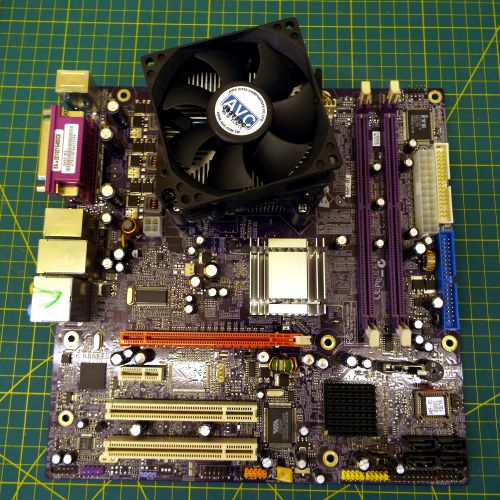
These boards aren't anything
particular special, it's an old
LGA775 board and seem prone to a
certain issue (as we shall
see*), but I do like the
purple-coloured PCB.
Issue #1: The initial issue
was that the BIOS had reset,
losing its settings and its
ability to BOOT from the hard
drive. It turned out that the
default setting for the hard
drive was RAID rather than the
required AHCI (or IDE). I had to
remember this while I was
working on the board with the
CMOS battery removed.
Issue #2: With AHCI set
correctly the motherboard seemed
to perform reliably, however it
was apparent that there was
another issue lurking, or
leaking; a few capacitors on the
board were showing signs of
failing (it seems to me this is
a common issue with these
boards).

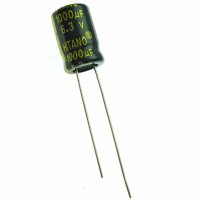 The
obviously failing capacitors
were all of the same type
(1000uF 6.3V 105'c) so I elected
to treat this as a project board
and replace those ones (rather
than interfere with any of the
others that looked fine). I'd
never "recapped" a board before
but had watched Youtube videos
of the process involved. I
ordered replacement components,
although I elected for 'Hitano'
ones, but checked they were
going to be of a similar size. The
obviously failing capacitors
were all of the same type
(1000uF 6.3V 105'c) so I elected
to treat this as a project board
and replace those ones (rather
than interfere with any of the
others that looked fine). I'd
never "recapped" a board before
but had watched Youtube videos
of the process involved. I
ordered replacement components,
although I elected for 'Hitano'
ones, but checked they were
going to be of a similar size.
Here
are the old capacitors removed:
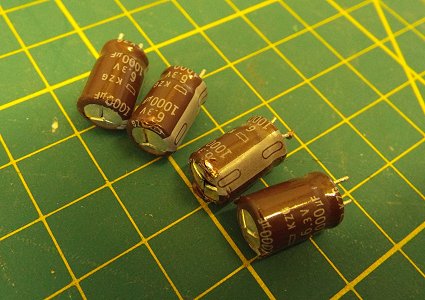
It
was fortunate I was treating
this as a project board as I
managed to cause some damage in
the desoldering process; one of
the (very) nearby traces got
damaged (I'd evidently applied a
little too much heat to the
board here in my effort to
remove the capacitors). Luckily
I noticed the problem before
testing the board because the
fine copper trace was now making
contact with the solder pad of
the neighbouring capacitor.
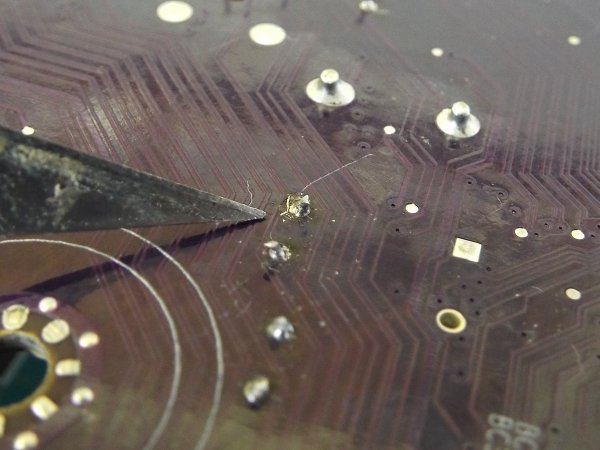
Thankfully the trace was still
in tact and I was able to gently
nudge back to its original
location; I then covered it over
with a dab of paint.
I
powered up the motherboard and
it worked (I was quite
surprised!). I have done no
further testing yet though so I
can only assume all the replaced
capacitors are doing their thing
(one looks to be related to the
PCI-E x1 slot).
Issue #3: While I was
replacing the capacitors I
noticed some further damage to
the motherboard. A component had
failed near the USB headers and
left a sooty mark up the board.
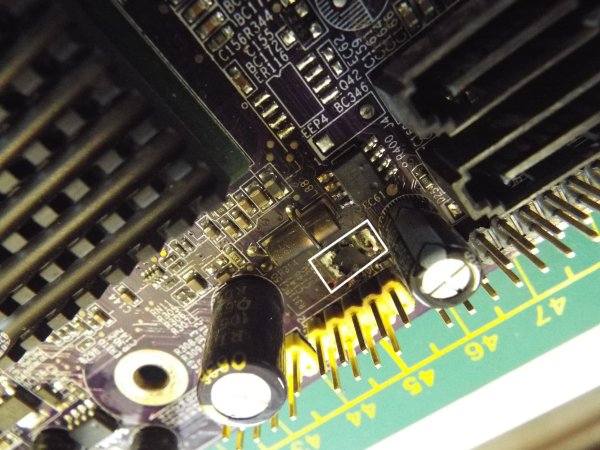
I
was already aware that there was
damage to the USB sockets on the
front of the computer's case,
and these headers were where
those sockets connected to. I
had assumed that the sockets had
just been broken at some point
and that was the extent of the
issue, but now it seemed obvious
that in the process of the
sockets being damaged a short
had damaged whatever component
was supposed to be at that
location on the board. I tested
the headers and indeed found
them not to be working.
Due
to the extent of the damage
there was no component left to
determine what exactly should
have been there. I looked at
other motherboards I had to look
for something similar, but with
no luck. I also looked for
images on Google and for similar
motherboards being sold on ebay
to see if I could determine what
component was there, but sadly
none of the images were of a
high enough resolution. I also
considered buying another of the
same motherboard just so I could
identify the component and
repair this one, but none were
available for a reasonable
price.
It
seemed that whatever component
was originally there simply
bridged two solder pads, rather
than there being, say two or
three contacts on one side and
one on the other; there were
also no similar components
elsewhere on the board that I
could refer to. It wasn't until
I was searching for components
for another project that I
happened upon an image of a "resettable
fuse" and I realised that's what
was likely what I needed. But of
what value? I still didn't know
this but I took another look at
my other motherboards and found
one with similar components
neighbouring the USB headers and
found one with a resettable fuse
here, I could see the numbers
printed on it (P 260) and
have ordered some of the same (PTTC
SPR-P260T SMD 2.6A 6V PTC
Resettable Fuses).
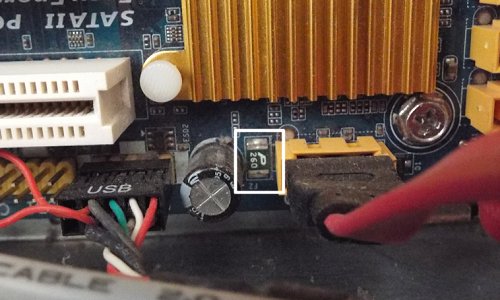
 They'll be coming from China so
will take a while; hopefully
that'll get the USB headers
working again. The USB sockets
on the front of the case are too
damaged to repair and are not
easily replaceable so I'll
likely fill them with hot glue
to seal them off and connect a
fresh set of sockets that can be
situated in a spare drive bay. They'll be coming from China so
will take a while; hopefully
that'll get the USB headers
working again. The USB sockets
on the front of the case are too
damaged to repair and are not
easily replaceable so I'll
likely fill them with hot glue
to seal them off and connect a
fresh set of sockets that can be
situated in a spare drive bay.
[Back
to Top]
|